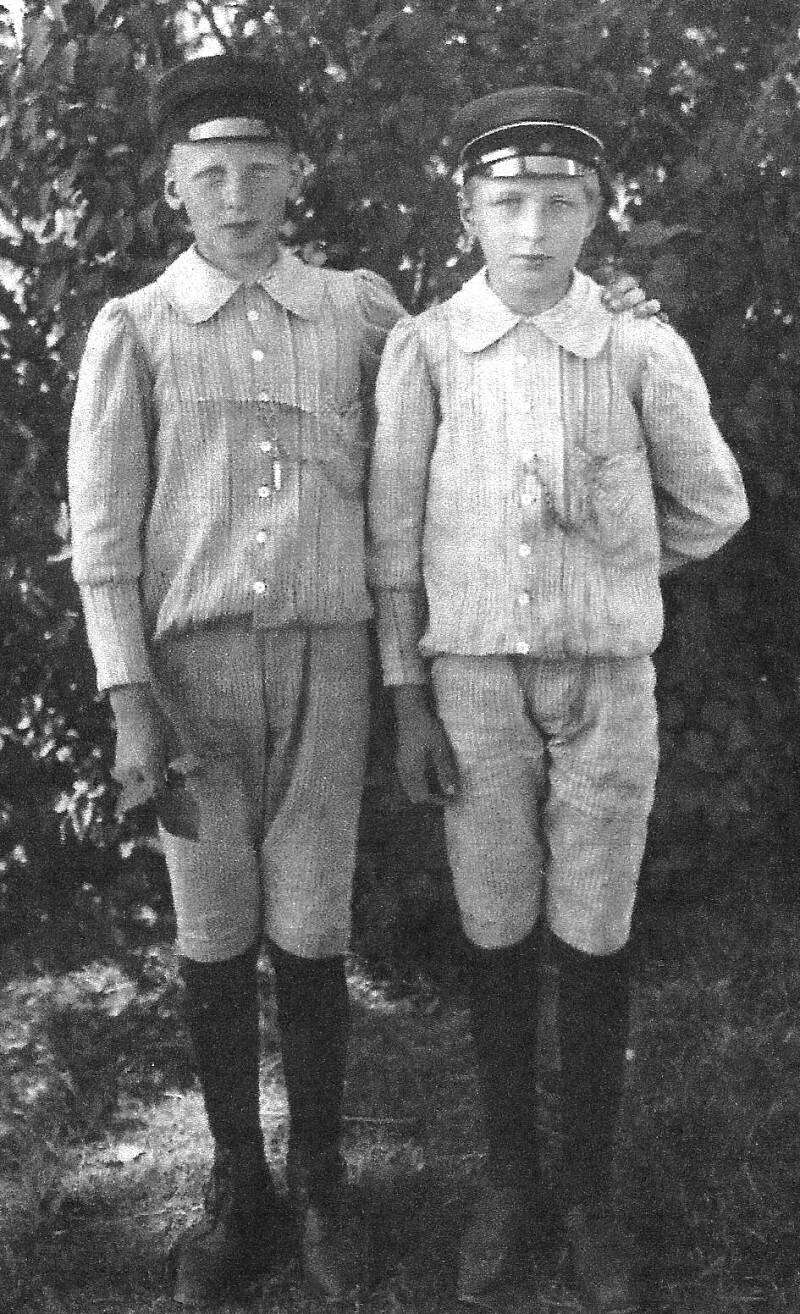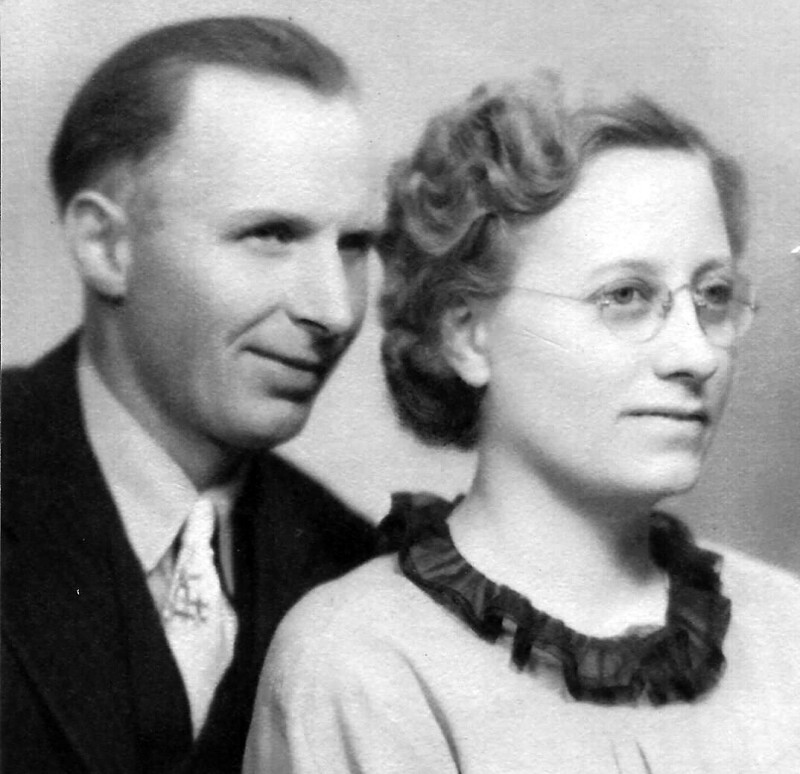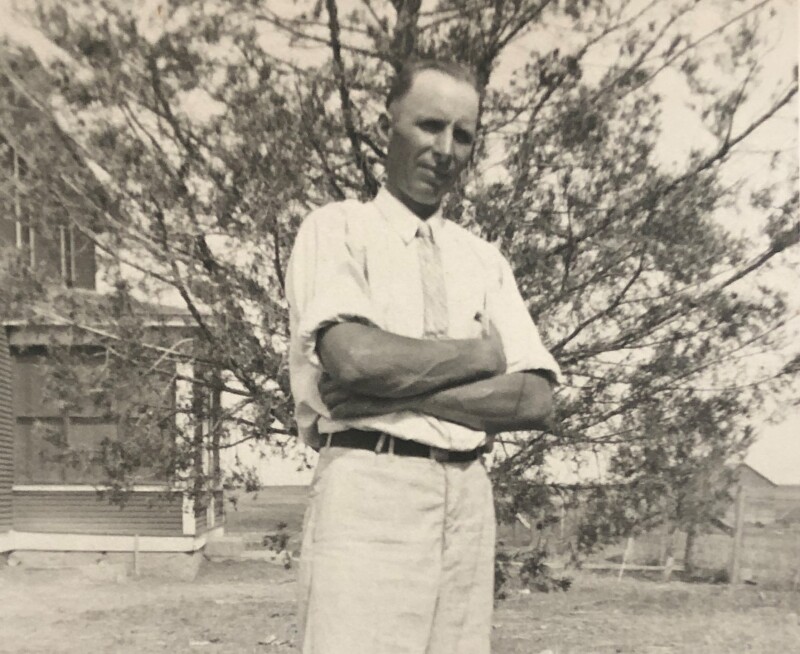A distraught young man from Sweden immigrated to America in 1920, searching for truth and comfort after a horrific accident in his home country. Karl Ivar Sandberg, who went by Ivar, fled his homeland in southern Sweden after he accidently shot and killed his best friend while the two were duck hunting. Ivar was so distressed that his parents worried he might take his own life. And adding to the problem, the father of the boy Ivar shot filed a lawsuit, seeking the harshest sentence possible. The father accused Ivar of murder, even though the court ruled that the death was accidental.1
Soon thereafter, a plan was made for Ivar to leave his country. It was timely that a former neighbor, who had moved to the United States and was then visiting Sweden, agreed to take the sorrowful teen to America to escape his situation at home.2
Search for Truth and Conversion

After settling in South Dakota, Ivar spent much of his leisure time in the 1920s in a reckless state of drinking and gambling, trying to escape his emotional pain rooted in the accidental death of his dear friend.3 He recounted he would sometimes lose large amounts of money gambling in just one weekend. However, a descendant of Ivar’s later wrote that “he eventually started thinking about religion … his parents were religious in Sweden and had taught him to pray, read the bible.”4
Ivar began to spiritually awaken while observing the growth of his grain and the birth of his farm animals.5 He also began to search the Bible for answers and visited five different churches in the region, yet he felt none of these Christian denominations squared with what was taught and established in the primitive Church as outlined in the New Testament.6
By the early spring of 1932, Ivar had the idea that he should reach out beyond the Christian denominations and explore what he referred to as the “heathen religions.”7 This led him to visit the Gettysburg Free Library in his South Dakota hometown, where he asked the librarian for a copy of the Koran, but she noted they had none. As Sandberg was departing, however, the librarian noted that the library had a copy of the Book of Mormon. Sandberg considered Mormonism to be a “heathen” religion, so he decided to read it. Sandberg recalled, “I had not read many pages before I discovered I had found a most remarkable book and the tears started to run down my cheeks and the most sweet spirit seemed to be present. … I had my cap on as I started to read the ‘Book of Mormon’, but before long I felt a man ought to read such a book with [a] bare head.”8
Journey to Salt Lake City
By 1933, Sandberg was converted. He wrote, “I had a … burning testimony of the restored gospel and I taught it to my friends.” In September 1934 he hired a man to take care of his livestock and headed west to Utah to get baptized, as he did not know of any missionaries in his region. As he reached Temple Square in Salt Lake City he was emotional in recognizing the area he longed to visit. When he arrived at the Tabernacle, he requested baptism and was referred to a Brother Joseph S. Perry, who was the mission president of Temple Square. Ivar later recalled that President Perry drilled him with a series of questions:
“Where did you contact missionaries? … What do you know about us and our doctrine?”
Ivar responded, “I know it is the true Church.”
“How do you know?” Perry asked.
“Through the books I have read,” Ivar responded.
“I mentioned about 25 books I had read and I could see that he looked at the [Temple Square tour] guide and marvelled,” Ivar recalled.9 Perry permitted the baptism the following Monday, October 1, 1934, and Sandberg was immersed in the Tabernacle font before a group of passing tourists. Ivar then spent several months in Salt Lake City until mid-February 1935.10
▶ You may also like: How strenuous clinicals in a psychiatric facility led to a nursing student’s baptism
Prior to his departure, he had been commissioned to return to South Dakota and share the gospel. He was also prophetically told of what would happen if he followed this counsel. One missionary who knew Ivar later recorded in his journal, “ Sandberg told me … that President [Joseph S.] Perry, on Temple Square, promised him in 1934 in the name of the Lord, that he would return to Gettysburg [South Dakota] and see a branch of the Church established there, and that he would be the branch president.”11
The Gettysburg Branch
Ivar returned to South Dakota in the winter of 1935, not only with a testimony but as a consecrated, converted member of the Church. He spent the next dozen years diligently teaching the farmers in his region. As a result, the Gettysburg Branch in Potter County, South Dakota, was created on June 6, 1948, with Ivar Sandberg as president.12

One young convert influenced by President Sandberg during this period was Curtis Dean Eliason Sr., who noted, “I owe a lot of where I am today to the efforts of Ivar Sandberg. … The marvel of his efforts is not only the change it brought into the lives of the people, but that whole families came into the church”13 Another convert, Doyle Thompson Jr. noted, “Bro. Sandberg loved the Lord and the Gospel. … The gospel radiated from him. … He loved many a convert into the Church.”14
Sharing the gospel with his neighbors included paying $700 out of his own pocket to the Potter County News to publish sixteen Church-related articles.15 These articles, published during the winter of 1950–51,16 treated a variety of Latter-day Saint doctrinal topics and ended with a summary, testimony, and invitation to local neighbors to learn more.”17 In addition to these articles, “he once did a mailing of church materials to all the farmers in South Dakota who had their addresses listed in the classified section of a statewide farm magazine.”18 He wanted to make sure that everyone within his sphere had a chance to hear the message of the restoration of the gospel.
Ivar also influenced the missionaries who came to visit him commencing in 1935. Sandberg’s commitment to the gospel and his missionary zeal spread across the North Central States Mission, and his conversion story was published in the Church-owned periodical Liahona The Elders’ Journal in 1943.19
As the years rolled on, Ivar continued to influence missionaries who passed through South Dakota. One was Elder Arthur Wiscombe, who met Sandberg in the spring of 1949 and was so impressed with him that he kept a separate journal record of each encounter he had with him. Among other things, he noted that Sandberg, while president of the Gettysburg Branch, had bought the elders a car and took care of their needs. One entry is particularly touching: “Brother Sandberg spoke to me in private, and upon observing that my suit was worn out, asked me if he could buy me a new one. I told him no, that I would be able to get along. He has already bought me the $10.00 shoes I now have on my feet.”20
The following year, another missionary, Leaun Otten, was assigned as district president of South Dakota, so Sandberg reported to Otten his assignment as branch president. Otten remembered with great fondness the Christlike service Sandberg offered.21 In summarizing Ivar Sandberg, Otten stated, “There’s a difference between a testimony and conversion, and he was totally converted to Jesus Christ and the gospel. He gave everything he had; he gave his life. … Ivar Sandberg was totally, 100 percent converted to the Savior. … ‘To do’ is an action, and that’s Ivar Sandberg.”22

Later Life
With President Sandberg leading the way, groundbreaking for a chapel in Gettysburg took place on August 26, 1951.23 When a discussion arose concerning the building of the chapel, Sandberg volunteered to pay for all of it. But the man who presided over the mission, President Hawks said, “No, Ivar. The other members need blessings too.”24
When the chapel was dedicated on May 11, 1952, President Sandberg gave a talk detailing the history of the local Saints and also his own conversion story.25 This retelling of how he found and joined the Church was no doubt influenced by Apostle Spencer W. Kimball, who had visited the Gettysburg Branch in 1951 and encouraged Ivar to make sure his conversion story was recorded.26
▶ You may also like: Ping’s inspired dream: How an unlikely friend helped open the Philippines for missionary work

Just six weeks after his testimony was recorded, Ivar passed away due to injuries sustained when the truck he was driving rolled over on a remote country road.27 He left behind not only the branch he’d planted and cultivated, but also his wife, Mildred Nelson, whom he’d converted and the six children they raised. Since then, Sandberg’s posterity has continued to sprout and produce a fruitful legacy. Neighbors have also continued to be grafted in as the Gettysburg Branch keeps growing. This dedicated Swede not only planted crops which physically sustained his household, but he also influenced the spiritual soil of those he met, causing many in Potter County, South Dakota, to be inspired by his testimony and consecrated life.
▶ You may also like: 900 new members baptized in Mozambique as COVID restrictions are lifted
This article is a prelude to the forthcoming documentary film A Seed and a Swede: The Life of Ivar Sandberg, projected to be completed in 2022. In addition, an upcoming book titled Dakota Saints, co-authored by Fred Woods and Sean Brotherson, will capture the inspiring story of Latter-day Saints in this midwestern region.
Notes
- Gilbert Sandberg, compiler, Pioneer on the Prairie: The Life Story of Ivar Sandberg 2nd edition, (Lehi, Utah: n.p., 2009), 32, hereafter cited as POTP. The court documents in the trial of Ivar Sandberg suggested, “The shot went off too soon. The cocking of the gun appeared to not be functioning” (POTP, 259). In addition, witnesses testified “the sunshine had indeed been glaring, that Ivar, due to the location when the shot went off, must have had the sun shine right in his face” (POTP, 264).
- Charlotte Sandberg Bloomlein interview, March 31, 2022, by Fred E. Woods, Provo, Utah, transcript in possession of author.
- Sandberg, POTP, 43. Ivar’s daughter reasoned that his reckless lifestyle at this time “was trying to escape his broken heart. (Bloomlein interview).
- Notes by Philip Sandberg of a phone conversation he had with LeGrand Christiansen, February 18, 1996, transcription in possession of the author.
- Gerald E. Jones, “A South Dakota Swede and the Book of Mormon,” Ensign (September 1976), 19.
- Jones, “A South Dakota Swede,” Ensign, 19.
- Sandberg, “My conversion to the Mormon Church, 1.”
- Sandberg, “My conversion to the Mormon Church,” 1–2.
- One of the early missionaries, named Elder Glenn Goodwin, noted, “President Sandberg was one of the most well-read individuals I have been privileged to know” (cited in POTP, 99).
- Notes from phone conversation with LeGrand Christensen, February 18, 1996, by Philip Sandberg.
- “My Missionary Encounters with Karl Ivar Sandberg” dated May 17, 1949, in “The Notebook of Arthur C. Wiscombe, vol. 2, Accn.# 2937, Box 12, fd. 3, Arthur C. Wiscombe Papers, J. Willard Marriott Library Special Collections, University of Utah, Salt Lake City, Utah.
- Sandberg, POTP, 78.
- Curtis Dean Eliason Sr., autobiographical sketch, typescript, courtesy of Dan Eliason, in possession of author.
- Doyle Thompson Jr. remembrance of Ivar Sandberg in email to Gilbert Sandberg, August 13, 2001.
- LeGrand Christensen, an early missionary to the Gettysburg, South Dakota, region and friend of the Sandberg family, noted that Ivar paid $700.00 for the articles to be published and received permission from the mission president to do so. (Notes from phone conversation of LeGrand Christensen to Philip Sandberg, February 1996).
- The first article was titled “Evidences of the Existence of God,” December 14, 1950 and the last article, titled “A Summary,” March 15, 1951, Potter County News, Gettysburg, South Dakota,
- “A Summary,” March 15, 1951, Potter County News.
- Sandberg, POTP, 76.
- “Seek and Ye Shall Find,” Liahona, vol. 41, no. 6 (August 24, 1943), 143.
- “My Missionary Encounters with Karl Ivar Sandberg” in “The Notebook of Arthur C. Wiscombe, vol. 2, Accn.# 2937, Box 12, fd. 3, March 3, 1950, Arthur C. Wiscombe Papers, J. Willard Marriott Library Special Collections, University of Utah, Salt Lake City, Utah.
- Leaun Otten, interview, February 23, 2022, by Fred E. Woods in Salem, Utah, transcript in possession of author.
- Otten, interview, February 23, 2022.
- “LDS Dedication Service Planned,” Potter County News (May 1952), newspaper clipping in Leaun Otten Scrapbook, courtesy of Leaun Otten, clipping in possession of author.
- Otten, interview, February 23, 2022.
- A sampling of President Sandberg’s talk may be found at https://www.familysearch.org/tree/person/memories/KWCK-R4B, accessed May 8, 2022. The entire address has been preserved on a CD attached inside the front cover of Gilbert Sandberg, compiler, Pioneer on the Prairie: The Life Story of Ivar Sandberg, 2nd edition.
- Otten, interview, February 23, 2022.
- Bloomlein interview.


